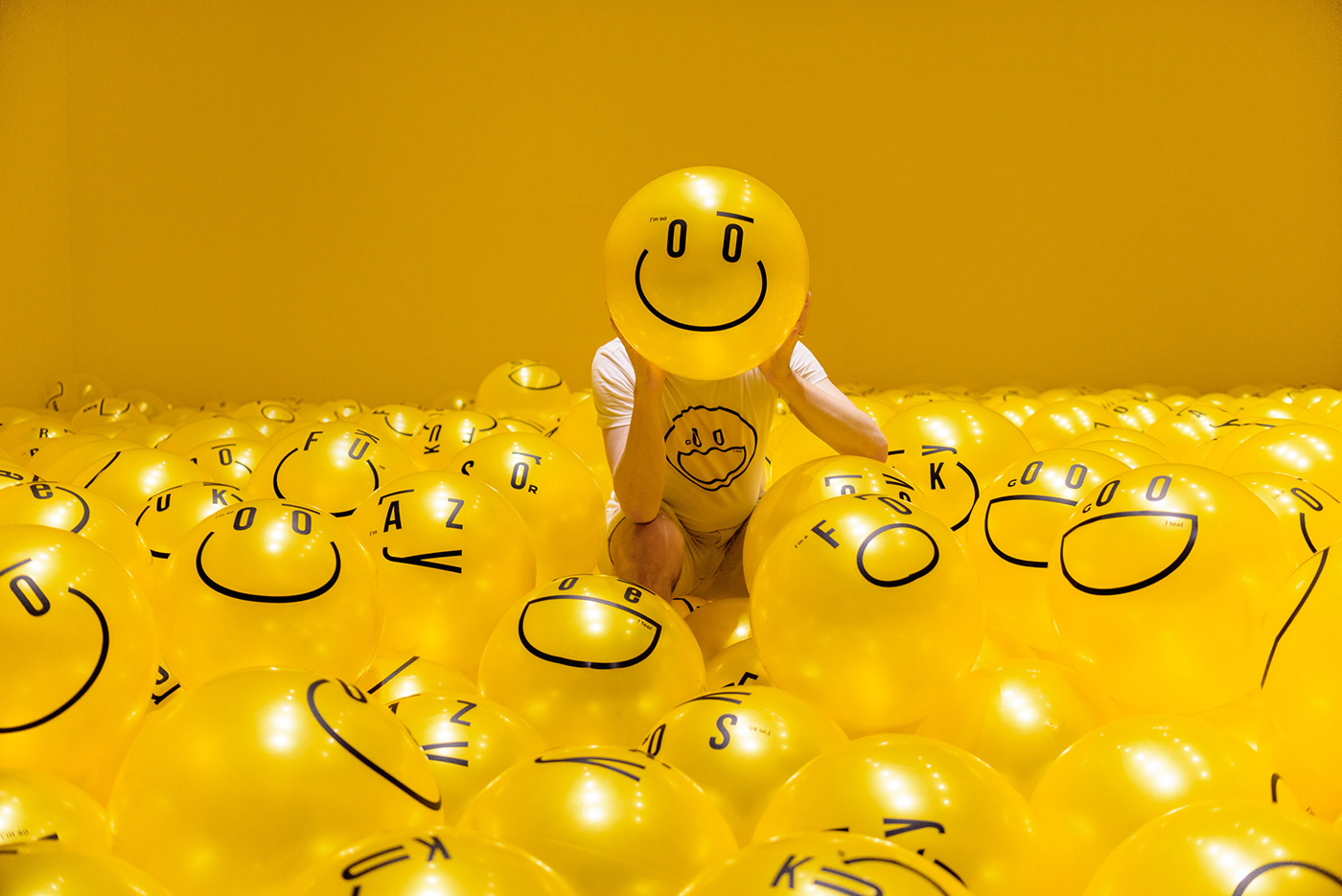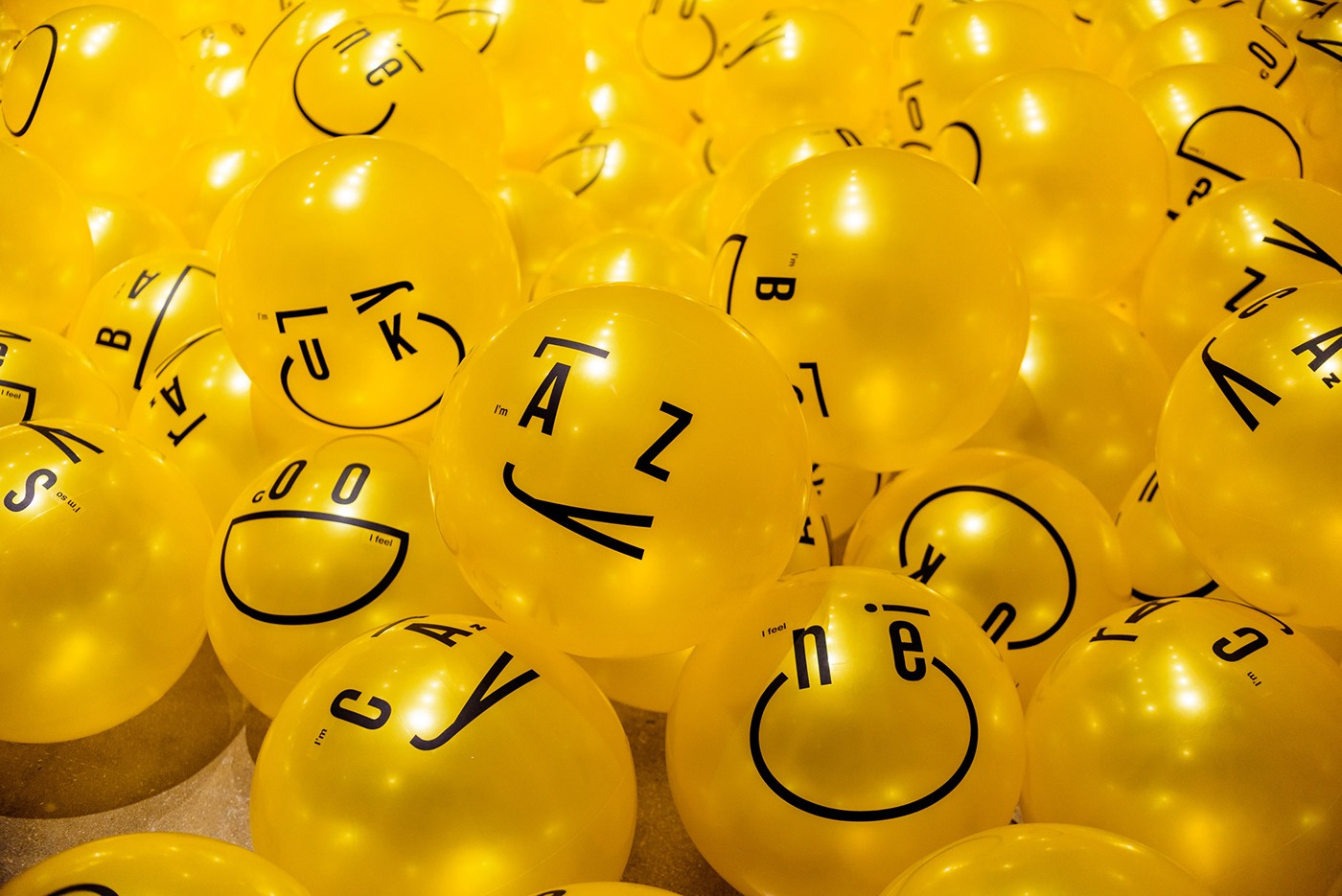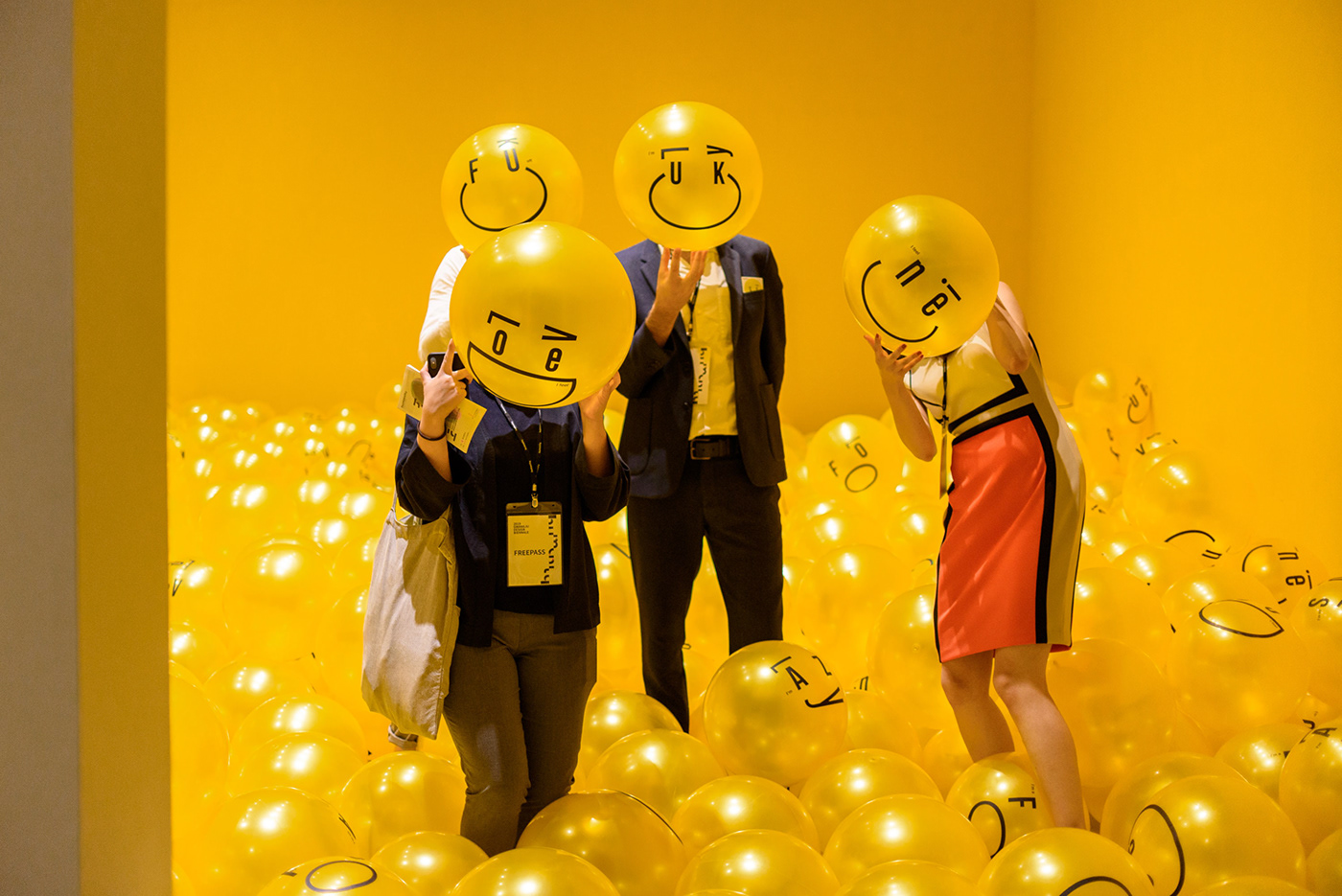art direction, Installations
Art Direction – Hello Emograms By Kissmiklos.

Art Direction – Hello Emograms
By Kissmiklos. For Ball.Room.
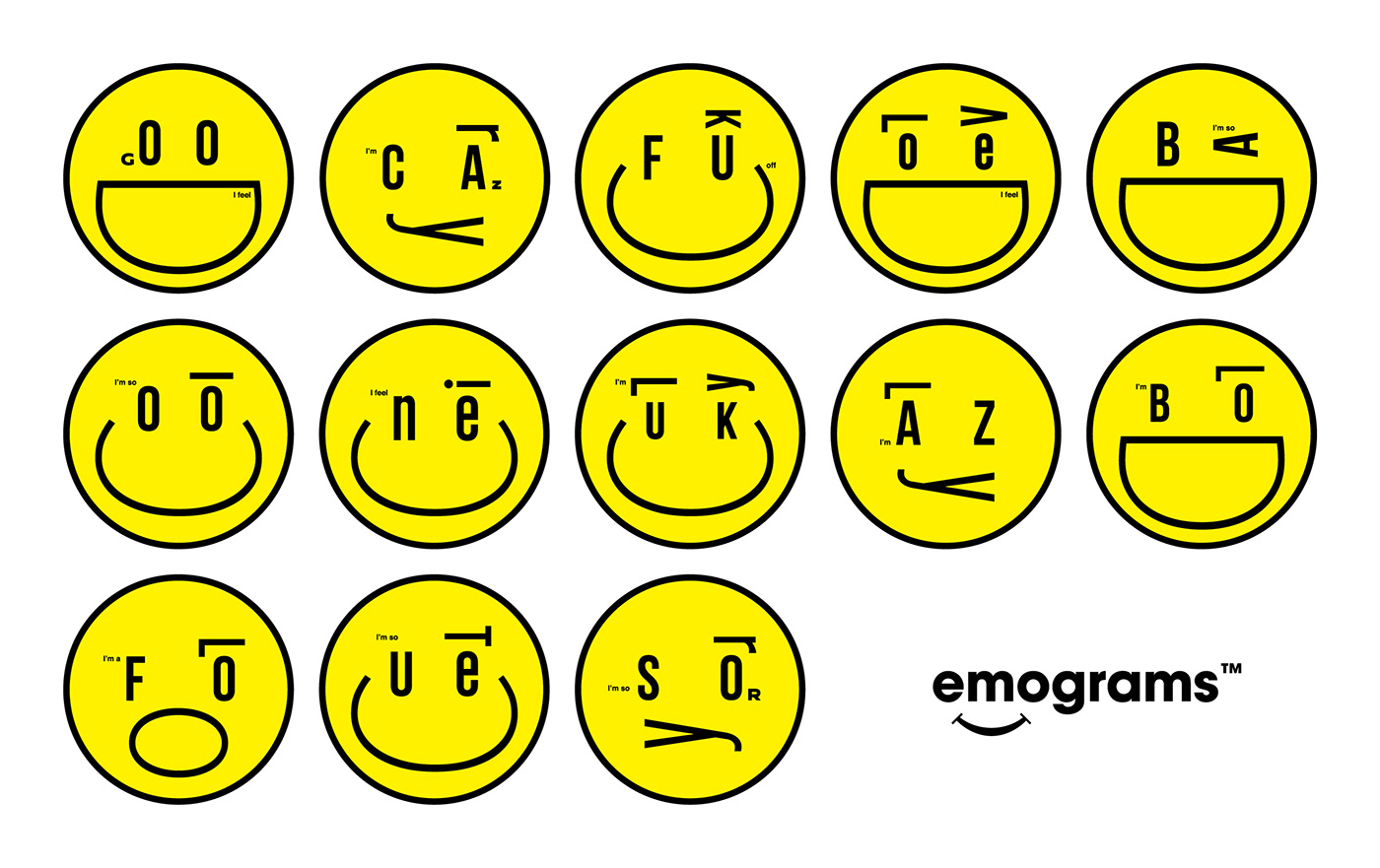
Ball.Room. – Hello emograms installation at the Gwangju Design Biennale 2019.
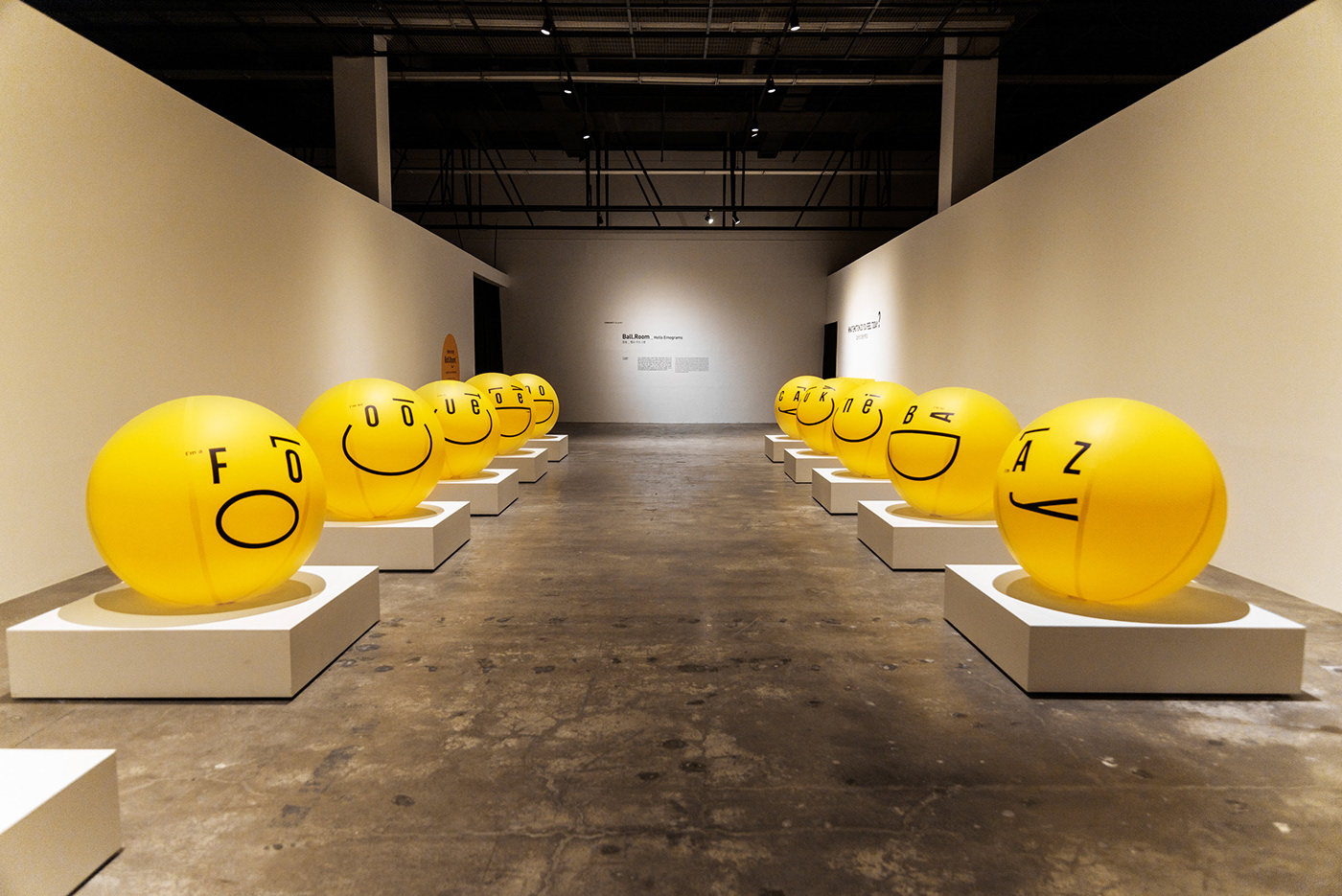

Ball.Room. – Hello emograms installation
at the Gwangju Design Biennale 2019
An interactive exhibition about the communication behaviour of human in the digital age
My Ball.Room. installation is on display at the Main Pavilion of the Gwangju Design Biennale 2019 in South-Korea. Like most of my artworks the Ball.Room. installation explores the borders and transitions between art and design and features immersive viewer interaction.
How can internet-based interactions express feelings? The Ball.Room installation prompts viewers to think about how human digital communication is. I created 13 different faces similar to emojis, but I called them very fittingly ‘emograms‘ instead, because they are made of words meaning the depicted emotions. The installation has two parts: one is a huge yellow room filled with yellow balls the visitors can play with, and the second is a group of 13 oversized inflatable emoji balls, 12 inflated and 1 deflated.
( The title Ball.Room. does not only mean a room with yellow balls, but it is also an homage to Harvey R.Ball, who drew the first “smiley”.)
The real twist of the Ball.Room. installation is that I actually transfer pictography back into alphabetic writing.
I received my inspiration in 2015 as the Oxford Dictionaries chose a pictogram, to be exact an emoji, as the Word of the Year. Emoji is a Japanese word, the ‘e’ means picture + ‘moji’ means a letter / character. The similar sounding English word emoticon (emotion icon) helped the Japanese word to spread.The incredible rise of emojis is a fascinating cultural and linguistic phenomenon. Its history goes back to the roots of modern writing that developed from pictures: pictograms and ideograms. 1982 Scott E.Fahlman, a professor at the Carnegie Mellon University, typed the first 🙂 Starting from the widespread use on Japanese mobile phones in the late 1990’s, emojis multiplied in form and variety and conqueredthe world’s electric discourse. They infuse the contemporary digital conversations with facial expressions and gestures.
The Ball.Room. installation reveals the need for a human touch in today’s text-based cyber communi-cation. My Ball.Room. installation play with this baffling reverse transformation: first, pictography writing became simplified and alphabetical, then pictograms were reinvented by using alphabetical writing.
The exhibition is curated by Dr Danny Lee (the head curator in the main pavilion), Dain Jung (the researcherin the main pavilion), Seungha Lee (curator in the main pavilion), Sujin Shin (curator in the main pavilion).
Photo by Eszter Sarah


